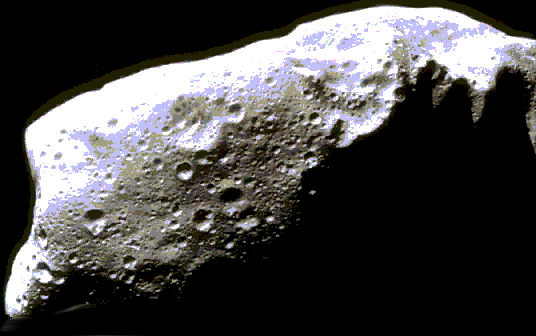Surface Composition
With the exception of a few that have been traced to the moon and Mars, most of the meteorites recovered on earth are thought to be asteroid fragments. Remote observations of asteroids by telescopic spectroscopy and radar support this hypothesis. They reveal that asteroids, like meteorites, can be classified into a few distinct types.
Three-quarters of the asteroids visible from earth, including Ceres, belong to the C type, which appear to be related to a class of stony meteorites known as carbonaceous chondrites. These are considered to be the oldest materials in the solar system, with a composition reflecting that of the primitive solar nebula. Extremely dark in color, probably because of their hydrocarbon content, they show evidence of having adsorbed water of hydration. Thus, unlike the earth and the moon, they have never either melted or been reheated since they first formed.
Asteroids of the S type, related to the stony iron meteorites, make up about 15 percent of the total population. Much rarer are the M-type objects, corresponding in composition to the meteorites known as "irons". Consisting of an iron-nickel alloy, they may represent the cores of melted, differentiated planetary bodies whose outer layers were removed by impact cratering.
A very few asteroids, notably Vesta, are probably related to the rarest meteorite class of all: the achondrites. These asteroids appear to have an igneous surface composition like that of many lunar and terrestrial lava flows. Thus, astronomers are reasonably certain that Vesta was, at some time in its history, at least partly melted. Scientists are puzzled that some of the asteroids have been melted but others, such as Ceres, have not. One possible explanation is that the early solar system contained certain concentrated, highly radioactive isotopes that might have generated enough heat to melt the asteroids.
